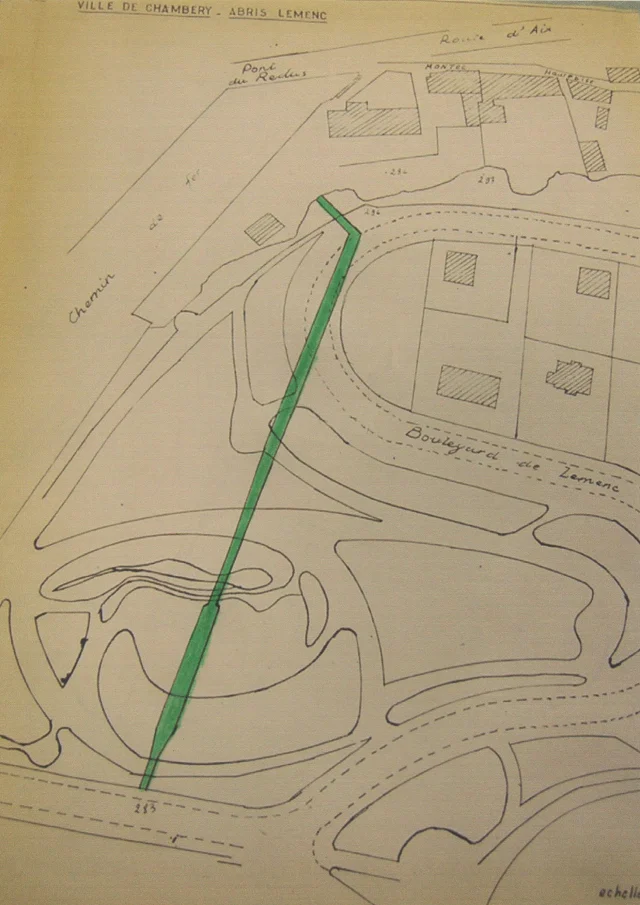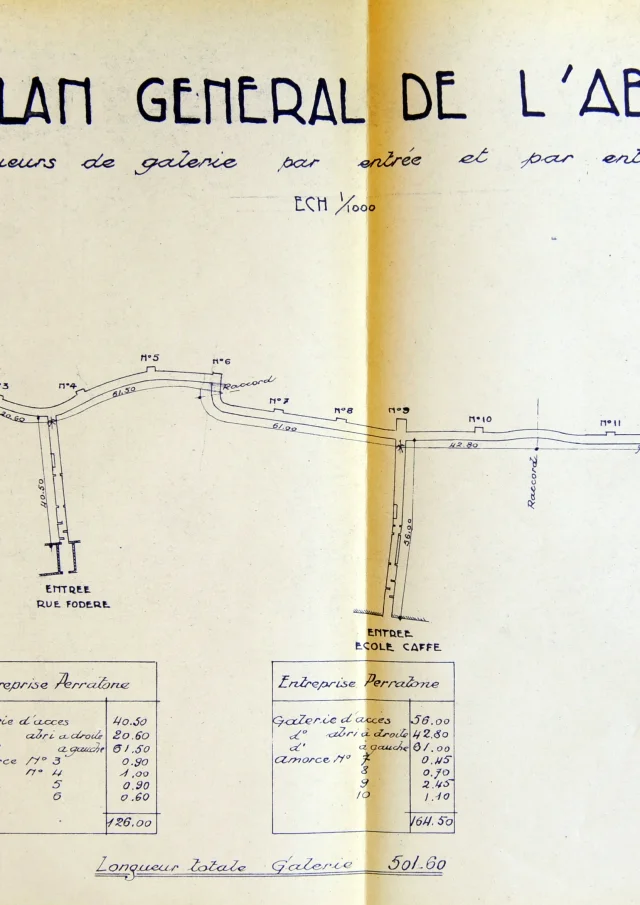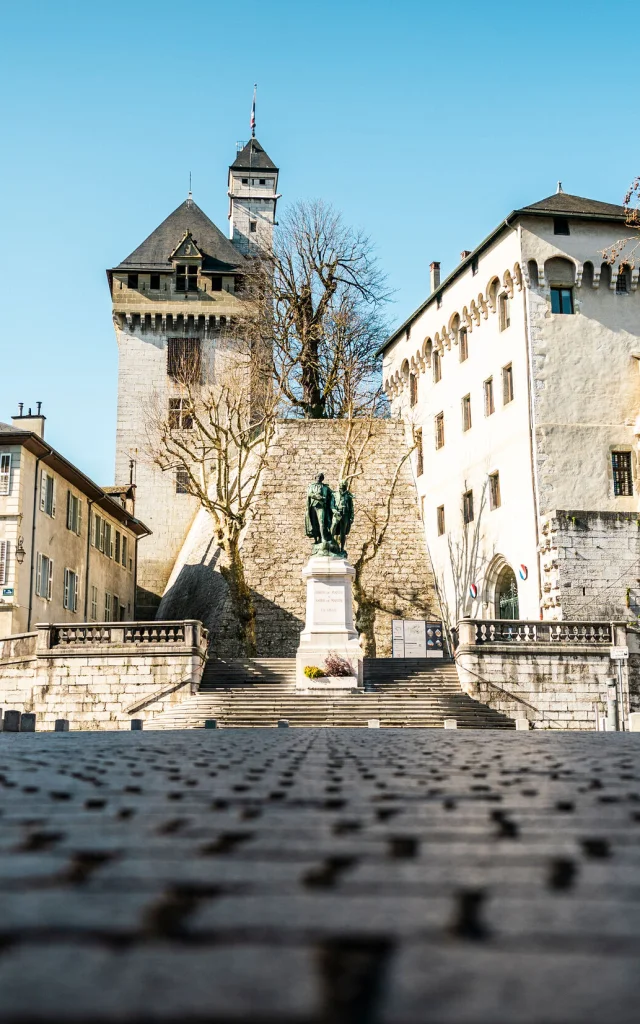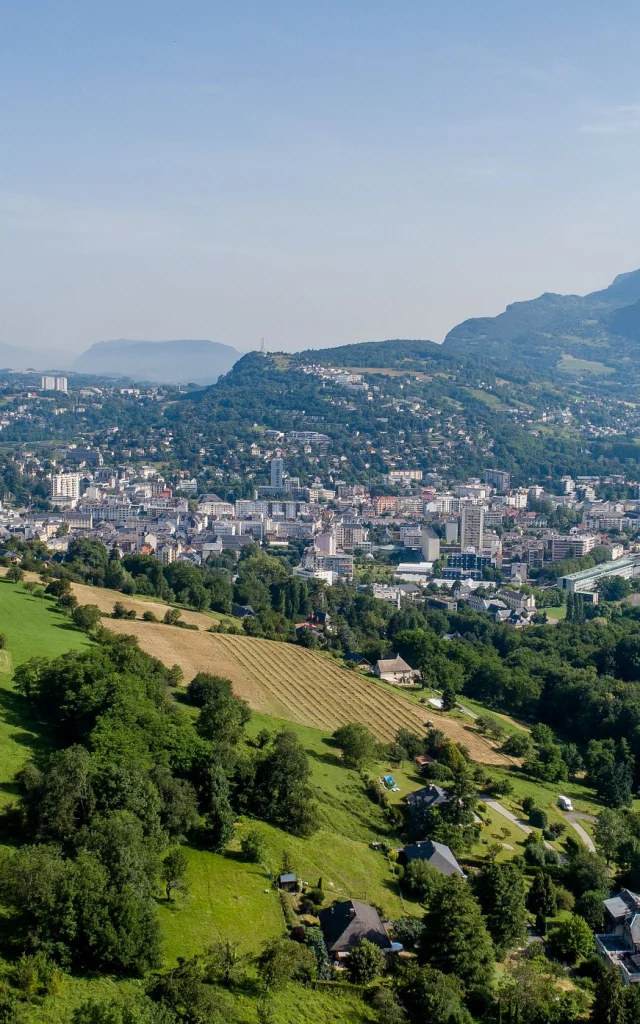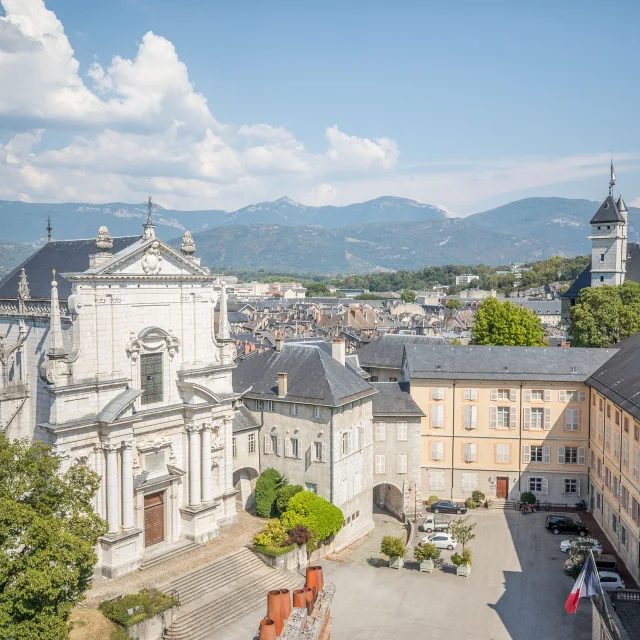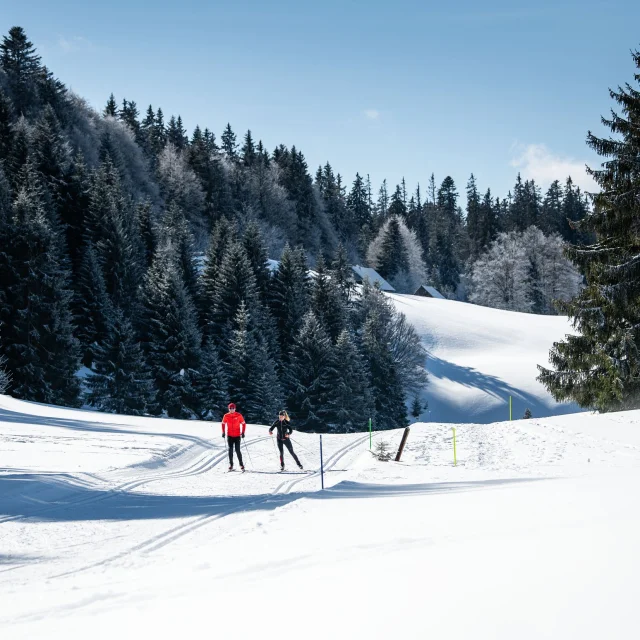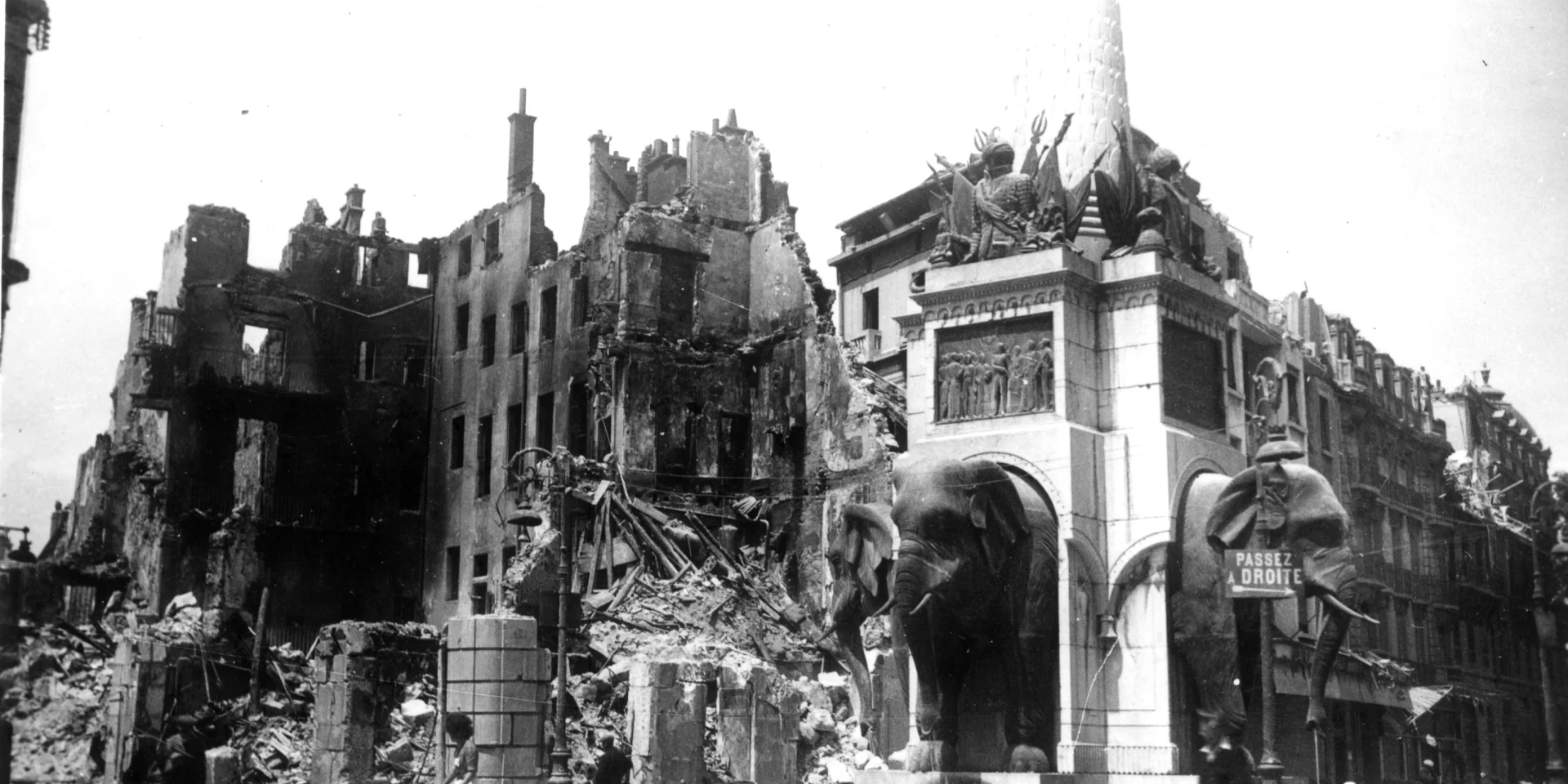 Bombardment 26 May 1944 Chambery 16
Bombardment 26 May 1944 Chambery 16Chambéry'Cimes podcastAir-raid sheltersChambéry
Clos Savoiroux
Clos Savoiroux,
witness to the bombing
of 26 May 1944
This is a tragic page in the history of Chambéry: that of Friday 26 May 1944. It was a day that will be forever etched on the soul and face of the town, as well as on the destiny of those who lived there at the time…
It was 6am on 26 May 1944. In southern Italy, 900 Allied bombers were preparing to take off. Each flight leader was handed a sealed envelope containing the mission objective. In Nice, Grenoble, Lyon Vaise, Saint-Étienne… and Chambéry: stations were targeted everywhere. Gradually, in these waking cities, the sirens began to sound. That day, 720 bombs, each weighing 227 kg, fell on Chambéry.
Jacques Viout, vice-president of the Friends of Old Chambéry society, sheds light on the day the city was bombed. He takes listeners to an unusual site, one that is nonetheless an essential part of Chambéry’s heritage: the clos Savoiroux air-raid shelter.
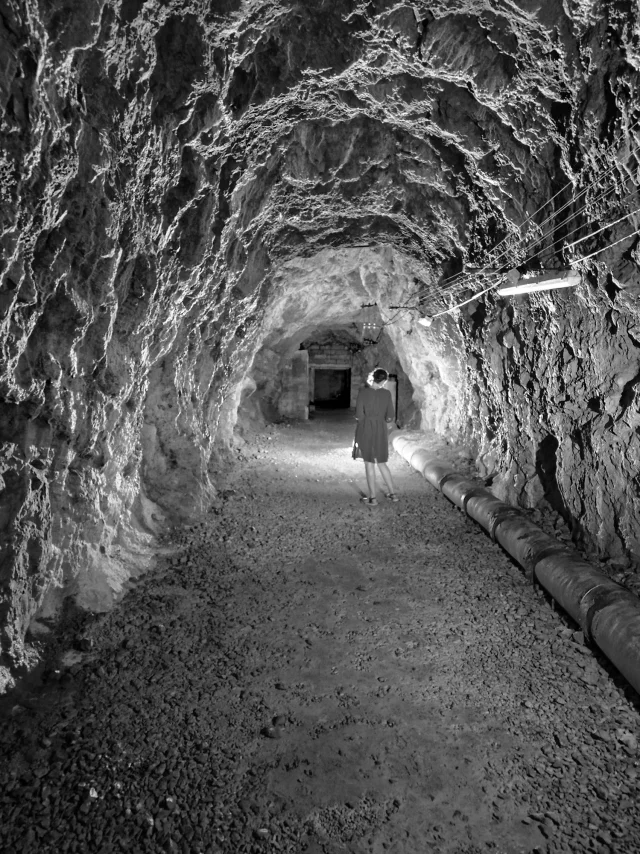 Clos Savoiroux shed Chambery
Clos Savoiroux shed Chambery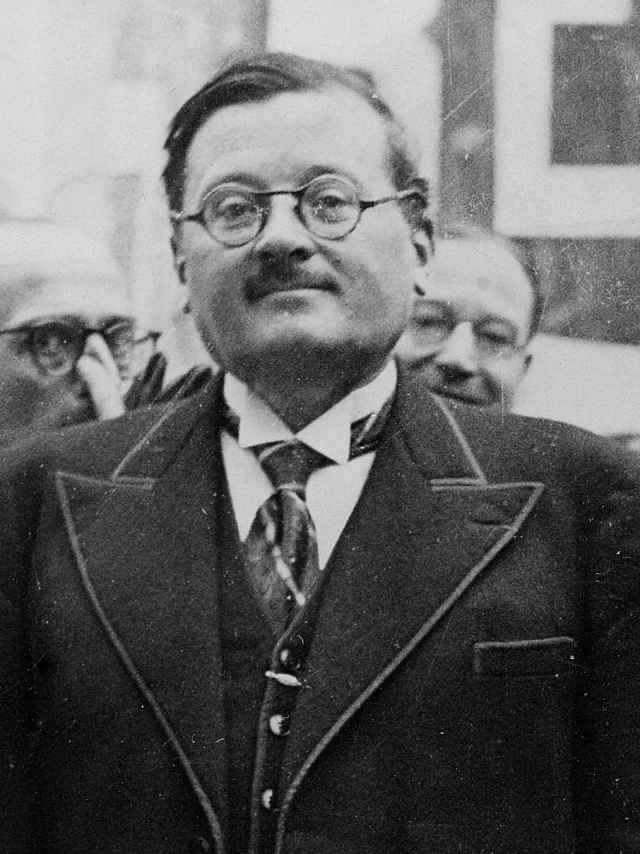 Albert Periol
Albert PeriolAlbert Perriol
Mayor of Chambéry
1935 -1941
In 1938, the French government sent a secret memo to all the mayors in France inviting them to build anti-aircraft shelters in the event of a conflict. At the time, none of the mayors responded to this appeal, except one: Albert Perriol, then mayor of Chambéry.
Why did Albert Perriol want to embark on this vast shelter construction programme?
Chambéry was built on marshland and the old part of the city had no cellars that could be used to shelter the population in the event of a bombardment. This shortcoming had to be remedied by breaking through the two hills surrounding the town: Bellevue hill on the one hand, and Lémenc hill on the other.
The construction
shelters
In February 1939, work began to break through Bellevue hill. A 500 m-long concrete gallery with 4 entrances and a capacity of 3,000 people was built in sandy soil. On 1 September 1939, the date that marked the start of the Second World War, the Bellevue shelter became operational.
Two further shelters were built on the Lémenc hill. These two shelters were cut into the limestone rock and looked very different from the Bellevue shelter.
Clos Savoiroux shelter: this is 200 m long and can hold up to 1,500 people.
The Nézin shelter: 150 m long, it can hold 1,000 people. At the time, the main entrance was on what is now the Avenue des Ducs de Savoie.
Later, the Maché shelter was built but never completed. This was located under the esplanade of the Château des Ducs de Savoie. When completed, it could have housed 2,200 people (now the château car park).
Shelter trenches were built in the town centre. These were shallow. They offered only relative protection against the blast of bombs and falling buildings. They could be found from Boulevard du Théâtre to Avenue du Comte Vert.
To these shelters should be added the various shelters built in schools.
With these extraordinary facilities, Chambéry was one of France’s leading cities when it came to protecting people from aerial bombardment.
With a population of 30,000, the shelters could accommodate around 12,000 people.
26th May 1944
The day Chambéry was bombed
Preparations for the Normandy landings prompted the Allies to neutralise railway hubs. The aim was to disorganise the movements of the German army, to prevent it from reinforcing its numbers on the Normandy beaches, where Operation Overlord was being prepared.
On 26 May 1944, several towns in south-eastern France were bombed: Nice, Grenoble, Lyon, Saint-Etienne, etc. Chambéry was also on the list. The target assigned on the flight plan concerned its railway installations and in particular the railway rotunda.
First wave of the bombardment
10.44 am – 20 seconds
The first wave flies at an altitude of 6,096 m.
A green rocket fired by the lead aircraft triggered the order to drop the bombs.
Despite popular belief, the first bombardment hit the station and its facilities with full force.
The rotunda was pierced by 3 bombs,
48 machines were disabled,
All the installations around the rotunda were destroyed,
The Faubourg Reclus signal box was pulverised,
The interior of the passenger building was blown up.
Yes, Chambéry station was heavily damaged on 26 May 1944.
Second wave of the bombardment
10.44 am – 50 seconds
The operator in the lead aircraft cannot locate the target covered by the smoke from the first bombing wave. The order to drop the bombs was given 30 seconds too early.
Unfortunately, this second drop hit the heart of the city: an area between the rue Doppet, the boulevard du Musée, the boulevard de la Colonne (and its shelter trenches), one side of the rue de Boigne, the place de Genève and, further on, the rue Juiverie. The streets within this perimeter were affected to varying degrees.
In all, the bombardment of Chambéry lasted 90 seconds.
72 aircraft each dropped 10 bombs weighing 227 kg.
There were no time bombs or incendiary bombs.
Place des Eléphants
A few days after the bombing.
Shot from the Paris building.
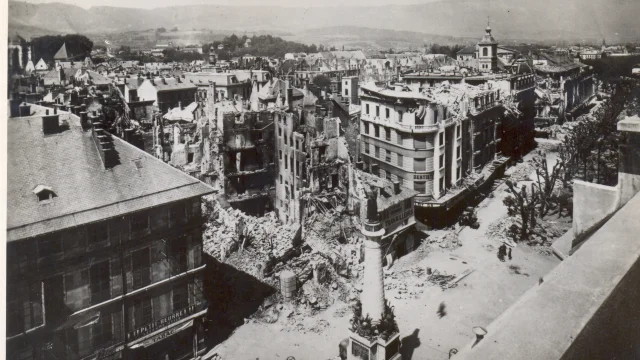 Boulevard du Théatre, boulevard de la Colonne and colonne des éléphants - Exhibition on the bombing of Chambéry, photo scanned on 5 March 2009
Boulevard du Théatre, boulevard de la Colonne and colonne des éléphants - Exhibition on the bombing of Chambéry, photo scanned on 5 March 2009Avenue du général de Gaulle
On the left of the photo: the château de Costa de Beauregard, destroyed in the bombardment; in the centre: the building that housed the conservatoire, the nursery and the municipal showers. On the day of the bombing, around forty children were in the basement of the building. Buried under the rubble of the Château de Costa de Beauregard, they were miraculously saved.
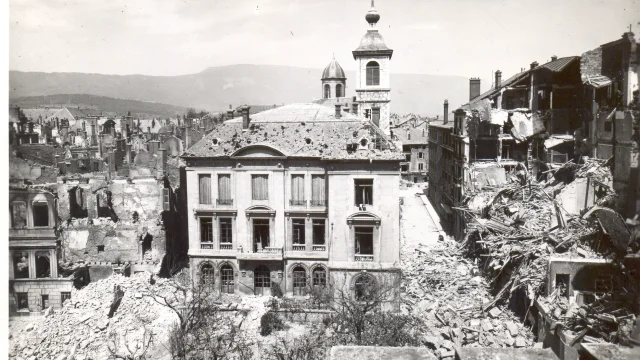 Bombardment of Chambéry (26 May 1944) - Rue Notre Dame and the Conservatoire, photo scanned from the Georges Henry collection, photographer
Bombardment of Chambéry (26 May 1944) - Rue Notre Dame and the Conservatoire, photo scanned from the Georges Henry collection, photographerCorner of rue Juiverie and place Saint-Léger
Taken from the rue du Sénat, this photo is the only evidence of the rescuers under the rubble.
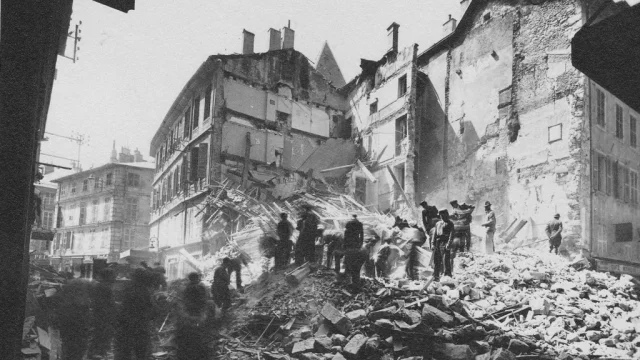 Bombing 26 May 1944 Chambery 3
Bombing 26 May 1944 Chambery 3Intersection of rue Favre and rue Saint-Antoine
As this photo shows, rue Saint-Antoine was a curved street, with the Palais de Justice in the distance on the left. These streets were not destroyed by the impact of the bombs, but by the fires that broke out after the bombardment. This area of Chambéry was the one that was most restructured during the Reconstruction. Today, the two streets run perpendicular to each other (rue Saint-Antoine is now aligned with rue de Maistre).
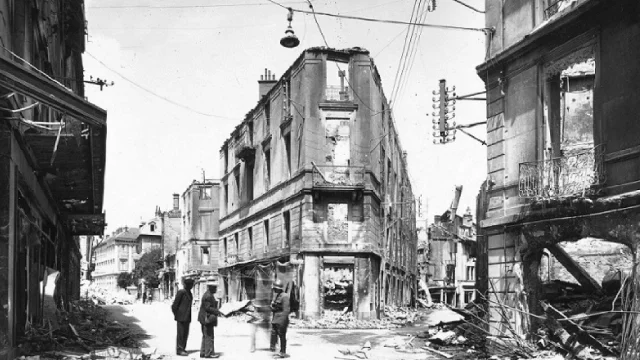 Bombing 26 May 1944 Chambery 2
Bombing 26 May 1944 Chambery 2Chambéry'CimesYou might also like to listen to...
Casualties, rescue and funerals
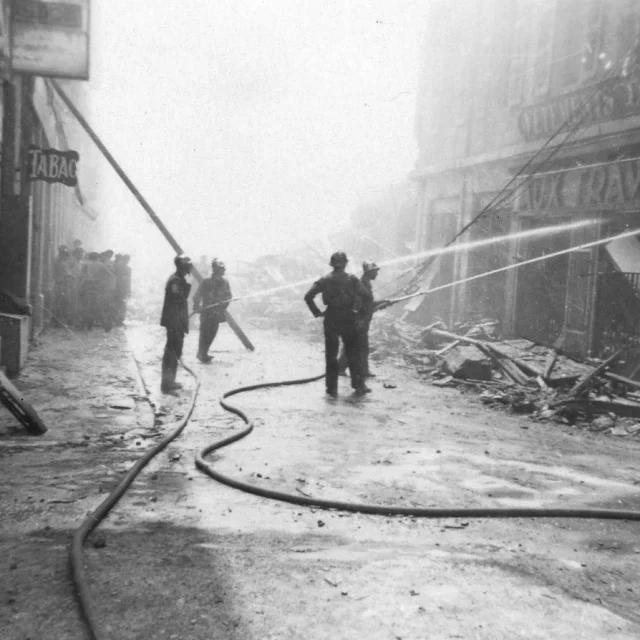 Bombing 26 May 1944 Chambery 12
Bombing 26 May 1944 Chambery 12200 people were killed.
Some 300 people were injured and 3,000 were left homeless.
In addition to the destruction of buildings, it was mainly fire that destroyed the heart of the city.
The bombs set fire to the buildings affected and the fire spread from building to building, causing the Great Fire of Chambéry.
For 3 days, the centre of Chambéry fell prey to an immense blaze that was impossible to contain. The last fires were not completely extinguished until 25 June 1944.
The funeral
An official ceremony was held on Monday 29 May 1944 in Place de la Cathédrale.
72 coffins were brought together for a solemn service.
For the people of Chambéry, the bombing of 26 May 1944 will remain a page written in letters of fire and blood.
Police and gendarmerie reports recount numerous acts of courage and selflessness, even by victims towards those more unfortunate than themselves. This page in history is synonymous with an extraordinary surge of solidarity.
Everyone came to help. And so Chambéry began to be reborn…
Rotunda and ancillary buildings
The rotunda was hit by three bombs. Its iron structure remained intact, but the windows were obviously shattered.
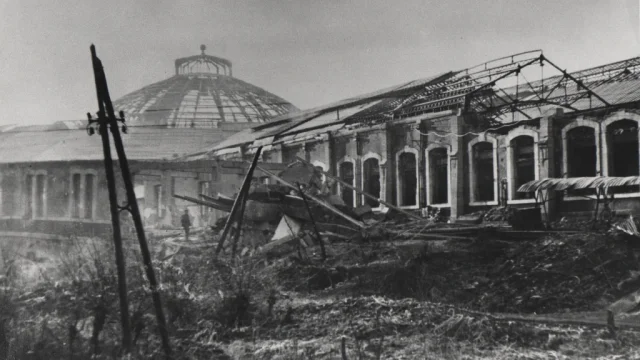 Bombing 26 May 1944 Chambery 13
Bombing 26 May 1944 Chambery 13Corner of rue Favre and rue Saint-Antoine
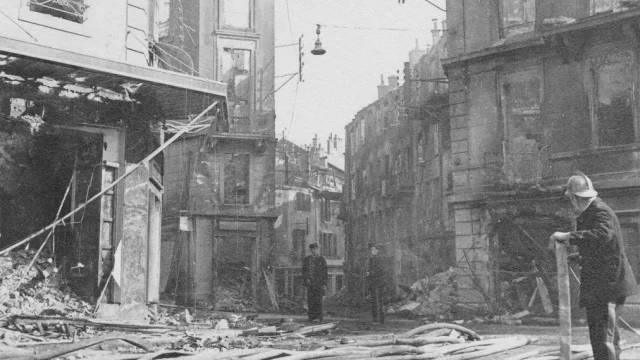 40b Rue St Antoine Sur Place Hi╠ctel De Ville
40b Rue St Antoine Sur Place Hi╠ctel De VillePlace Métropole
Church service in front of the cathedral
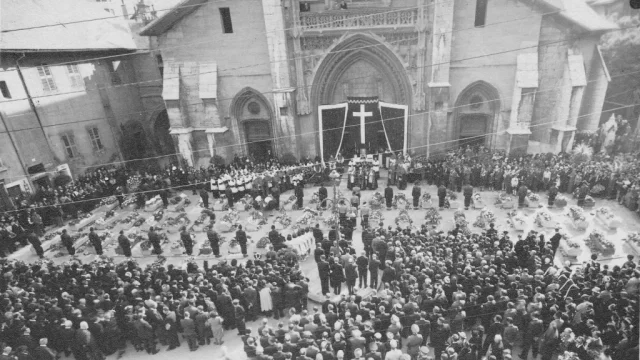 38b Sc╠opultures Cathc╠odrale
38b Sc╠opultures Cathc╠odralePlace des Éléphants
From the top of his column, General de Boigne awaits the reconstruction of the top of rue de Boigne.
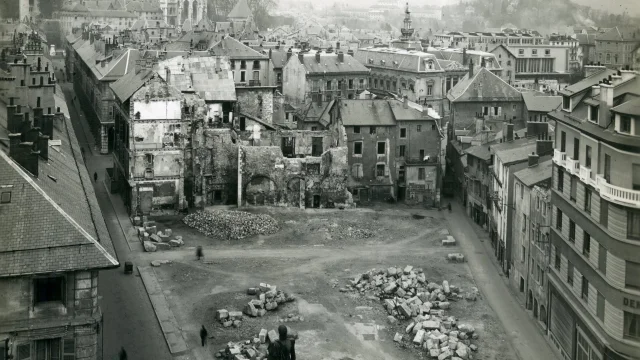 Img013
Img013Chambéry’Cimes
is a Chambéry Montagnes podcast
Sound recording, editing, mixing and production: Kamel Bouziane, Art AbordSavoie.
Melodies by Skal.
For this episode: a discovery of Chambéry in the company of Jacques Viout, vice-president of the Société des Amis du Vieux Chambéry and Julie Chavaribeyre for the tourist office.
All the archive photos have been shared by the Société des Amis du Vieux Chambéry. Thank you for this collection of images…
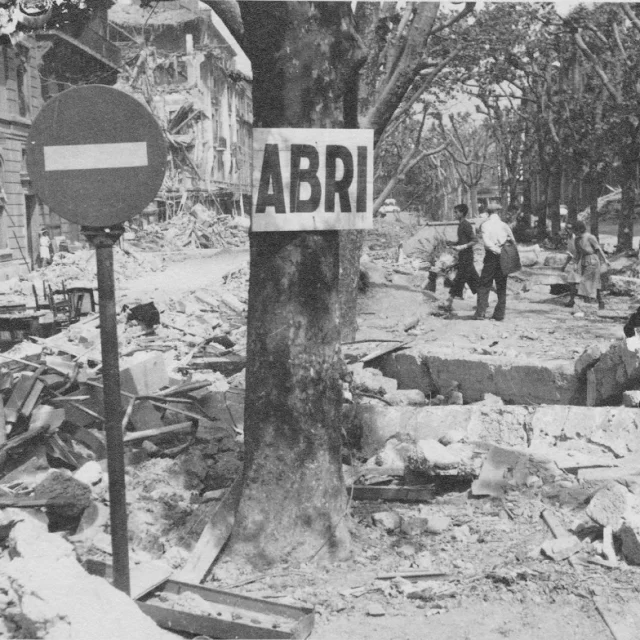 Bombing 26 May 1944 Chambery 7
Bombing 26 May 1944 Chambery 7
